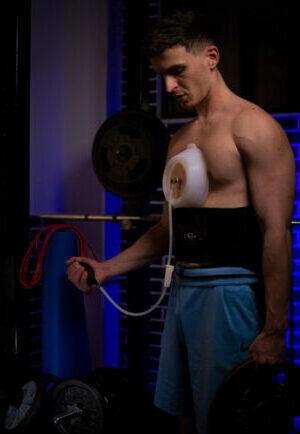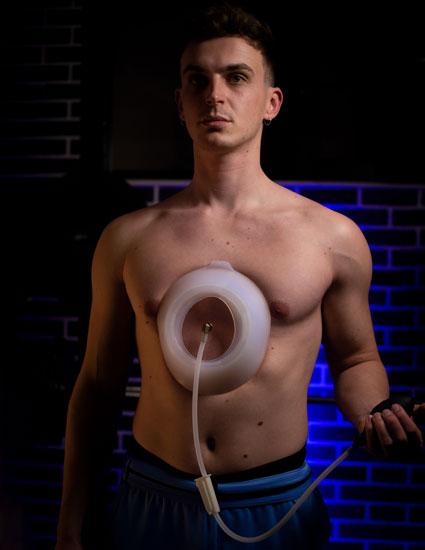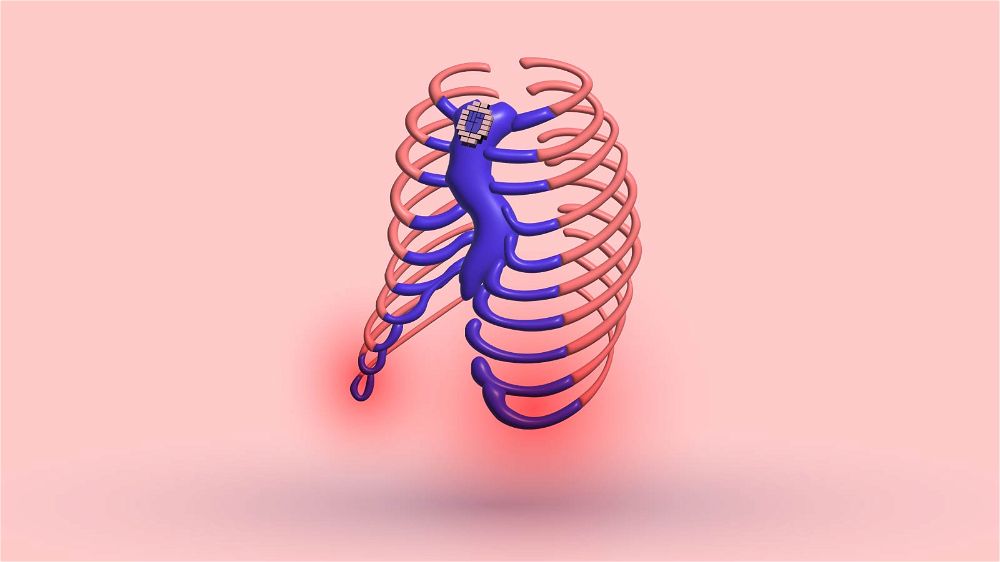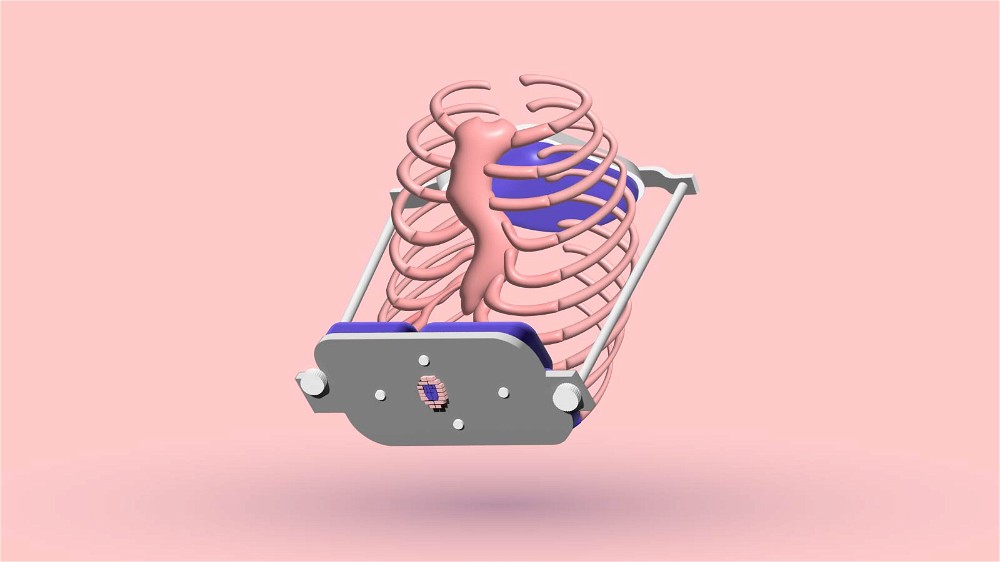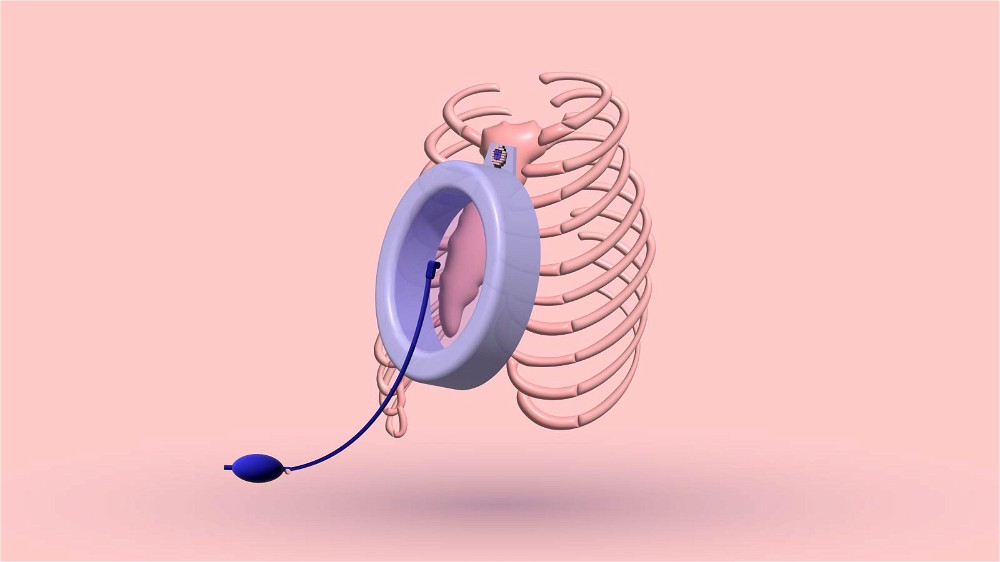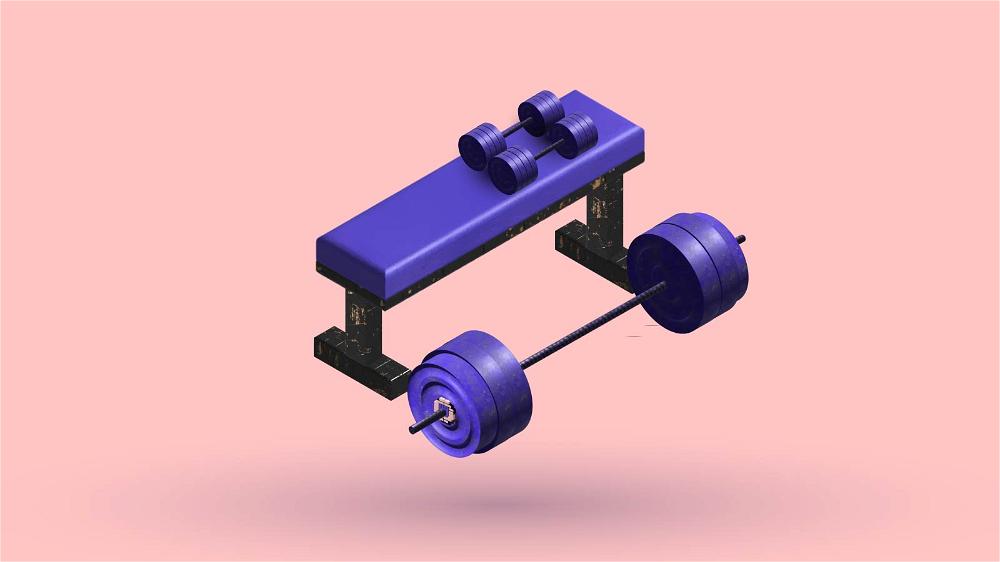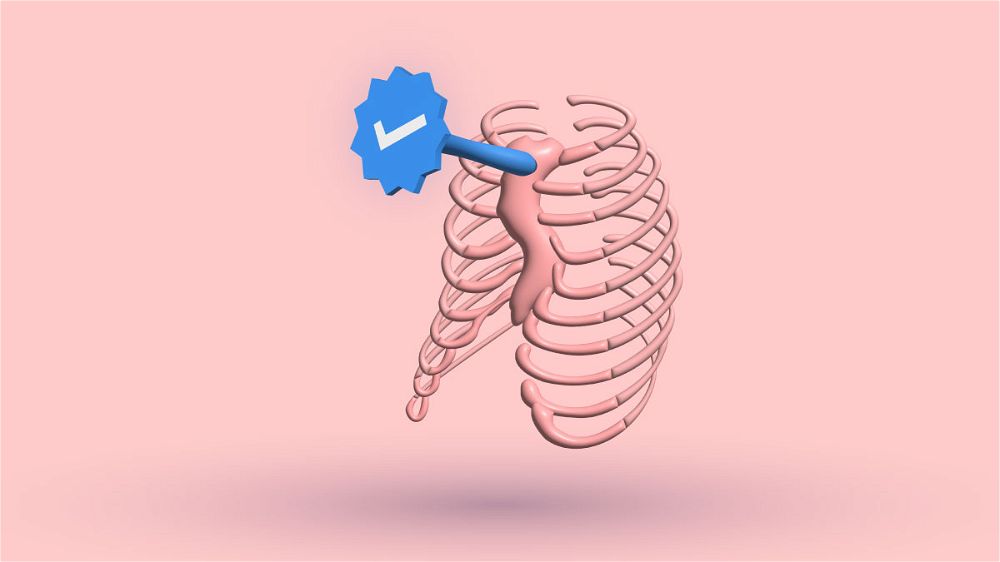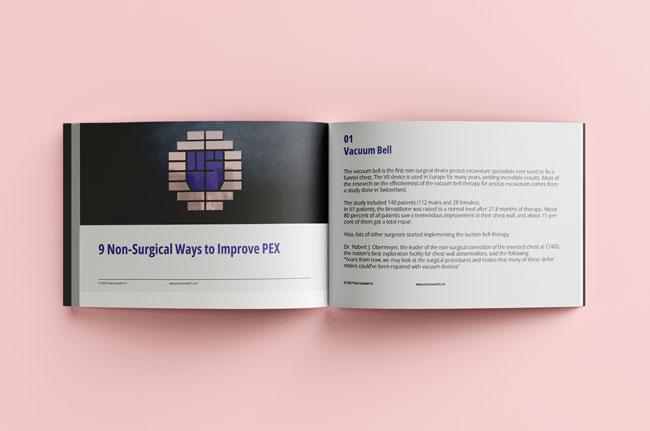If our sleeping pattern is terrible, our pectus excavatum deformity can worsen. We spend about one-third of our lives in bed, sleeping. In this blog post, I will talk about how you can maximize the benefits of those hours by sleeping on the floor.
Health Expert's Thoughts
According to numerous health experts, the ideal sleeping surface should be firm and not very soft. On a soft or worn-down mattress, one of the sides is probably more dipped than the other.
You will sag down asymmetrically, which is terrible for your posture and recovery. The cells in our body won't repair as well as they should, leading to increased anxiety, shoulder, neck, or back pains, immune system weakening, tiredness, etc.
I was never a fan of sleeping on a very soft bed because my body didn't get used to it. Experts recommend you sleep mostly on your back and sides and avoid stomach sleeping as much as you can.
Floor Sleeping With Pectus Excavatum
Floor sleeping provides a firm surface. Most body weight is located below the neck to the waist. The area that weighs the most will dip when you're lying on a soft surface.
This is called the "hammock effect," and a lot of stress is being put on the spine, where the legs are elevated, and the head is pushed forward, further worsening the poor pectus excavatum posture you may already have.
Floor sleeping will help you keep the proper vertical alignment while sleeping, helping you improve your posture while resting.
Uncomfortable At First
Sleeping on your back on the floor will feel very uncomfortable at first. You will probably wake up sore and in some pain.
This is because the muscles in your body have memory and are used to unnatural sleeping patterns, and when they are finally correctly aligned, they feel uncomfortable.
Similar to Working Out
The same applies when you're working out. The muscles will be sore when you wake up after a challenging workout. That is expected until the muscles get used to the strain.
When you sleep on the floor more and more, the pains will gradually reduce, and you'll eventually have some of the most peaceful night's sleep you've ever had.
You'll feel energized the following day, ready to tackle the obstacles your pectus excavatum deformity puts on you.
How Humans Are Designed to Sleep
Our ancestors didn't sleep on squishy mattresses and pillows back in the day. Throughout evolution, people slept on the ground. Our bodies are developed to rest on hard surfaces.
Sleeping on these soft surfaces is a relatively new occurrence. We go unconsciously about this without questioning whether this is the ideal sleeping surface.
Many people are surprised how others can sleep on the floor, mainly because it seems uncomfortable and dirty. When I started sleeping on the ground, I noticed instant improvements in my physique and mental well-being. This is the natural way to sleep.
Maintain 3 Normal Curves
The best night's sleep is when the three natural curves in the spine are supported.
- The natural curve of the spine in the neck - Cervical lordosis
- Front-to-back curvature of the thoracic spine
- Inward curvature of the lower back - lumbar lordosis
The spine should remain straight if you look at it from the front or the back. Any curvature to the side is considered scoliosis.
Stabilize These 3 Areas
The ideal posture is laying on our back to stabilize these three areas. When we sleep in a position where we unwind the muscles, relieve nerve disturbances, and keep a naturally aligned posture, the health of our spine will be improved and can help us relieve joint and muscle pains.
When sleeping on the ground, gravity will take everything that isn't natural to the joints and muscles away.
How to Stabilize
When we lay down with our back on the floor, it is best to use a cervical pillow or a rolled-up pillow to our neck to maintain the spine's natural curve.
Placing another regular pillow in a comfortable position below your knees would be best to keep them bent. This will make a massive difference to your physique and energy levels.
Pain While Floor Sleeping
Most people with sunken chest deformities are underweight and probably feel much pain while sleeping on the floor. On the other hand, if you're overweight, you'll most likely feel very uncomfortable, and your body won't adapt to the change.
If you want to bear the benefits of floor sleeping but experience pain, you should go through a transitioning process where you sleep on a two or 3-inch pad on the floor. It will help you relieve pain, but it won't be as comfortable as sleeping on a soft bed.
You May Never Get Used to It
Some people love living in comfort, and floor sleeping won't be for you. However, this isn't just resting on a covering on the dirty floor. Putting a two- or three-inch memory foam pad on a hardwood floor is still considered floor sleeping.
4 Benefits of Floor Sleeping for Pectus Excavatum
Improved Energy
The most significant benefit is waking up energized every day, even when you wake up early in the morning. After a few days of sleeping on the floor, you'll feel much more energized and motivated to start your day.
I usually wake up, brush my teeth, take a cold shower, drink lemon water, and hike, and when I go home, I write content for this website in the morning.
Since I added floor sleeping, I tend to avoid using the phone in the morning and wasting the essential part of the day, mainly because of increased motivation and energy.
Improved Flexibility
Sleeping on an unbending surface like the floor can help you squeeze water from the tissue. Because the feeling is uncomfortable, you tend to move your body at night.
When you do this, the fascia will be hydrated and relaxed. Contrary, soft surfaces will allow you to remain longer in one position, making you feel stiff when you wake up.
Here's a video of Isabel Paige showing how much her flexibility in yoga improved after she started sleeping on the floor. She claims that she drastically improved her back flexibility.
Yoga is extremely valuable in enhancing poor pectus posture and strengthening the core, making flared ribs and your sunken chest less visible. Improving yoga is very important, and sleeping on the floor can help.
Cost-Effective
After I slept on the floor and reaped the fantastic benefits, I firmly believe that most mattress marketing is misguided. For the longest, I thought spending a lot of money on a high-quality mattress was utterly essential, primarily because we spend one thrids of our lives on a bed.
Finding the right sleeping mattress for pectus excavatum can be a hassle. They are expensive, and sometimes making a wrong buying choice will prevent you from getting a good night's sleep. The ideal mattress for pectus excavatum is a sturdy one.
You can replicate the same by sleeping on the floor for no cost. Changing a mattress every five years is recommended, which can cost a lot. Also, sleeping on the floor is more environmentally friendly because you cannot recycle mattresses.
Perfect for Vacuum Bell Usage
The ground of the room is cooler. Sleeping on a lower level than the bed height will lower the temperature by a few degrees. This is very beneficial in the summertime, especially when you sleep with the vacuum bell or a pectus excavatum brace.
It will lower sweating throughout the night, making the application much more convenient. The itching on the skin throughout the night will be relieved.
Bedtime Ritual Importance
What you sleep on is less important than how you sleep. Developing a proper bedtime ritual is very underrated. Just like there are a lot of morning routines, I believe there should be equal nighttime routines because that is also very important.
Cutting out alcohol, blue light exposure, and unhealthy meals before sleeping should be cut out immediately. That will prevent you from sleeping well, no matter how expensive the mattress you're going to sleep on is going to be. Sleeping in quiet, dark, and cool rooms is very important.
Don't Go Too Hard Too Soon
Floor sleeping won't be as attractive as a modern, high-technology mattress. At first, it can be very uncomfortable, especially if you go too hard too soon, but it is better in the long run.
Ideal Balance
I highly recommend the following combination that has been used for years by the Japanese:
- Japanese-style pads on the ground for ventilation.
- A slim mattress topper that will provide minimal cushioning.
Your body and mind will reap the advantages of sleeping on a low-to-the-ground sleeping surface.
Who Shouldn't Sleep on the ground
Patients With Pectus Bar
I don't recommend patients who underwent Nuss Procedure and have a pectus bar underneath the sternum, to sleep on the floor simply because it can feel very uncomfortable.
Living with the pectus bar can be discomfiting by itself, and sleeping on the floor will only increase the distress in your life, regardless of the benefits it provides.
Older People
Generally, older people are more prone to bone-breaking and feeling cold throughout the night. The loss of mobility will also make getting up and going down to the floor much more complex and uncomfortable, especially if you have joint problems.
2 Disadvantages
Cold Temperatures
It can be very uncomfortable to sleep on the floor on tiles or wood in the winter because of the cold. It will take a lot of willpower to do that. I've tried to use insulation as yoga mats or various blankets, but nothing works for me in the winter.
During this time of the year, the cold bottom can rapidly decrease your body temperature, and you can feel much colder than sleeping in a regular bed.
Allergy
Sleeping on the floor can cause allergic reactions because of dust and dirt exposure. I don't recommend sleeping on the carpet because it can contain a lot of allergens like dust, mold, and dust mites.
Also, the thought of bugs on the ground stepping on me during sleep was very uncomfortable initially. However, after slightly elevating the floor bed on a Japanese-style pad and bed topping, I felt more secure from bugs.
The Bottom Line
Sleeping on the floor can benefit people suffering from pectus excavatum.
You will:
- Feel more energetic to start the day and spend less time-consuming social media after you wake up
- Your posture will improve.
- Applying of vacuum bell and pectus excavatum brace will be more comfortable because you'll sweat more minor in the summer.
Some of you may find it very uncomfortable, and you'll probably never get used to this feeling, mainly if you are used to sleeping on very soft mattresses.
The ideal balance is to purchase a Japanese-style pad and put a bed-topping on top of it. If you have any concerns, please write them in the comments below. Thanks for reading!


